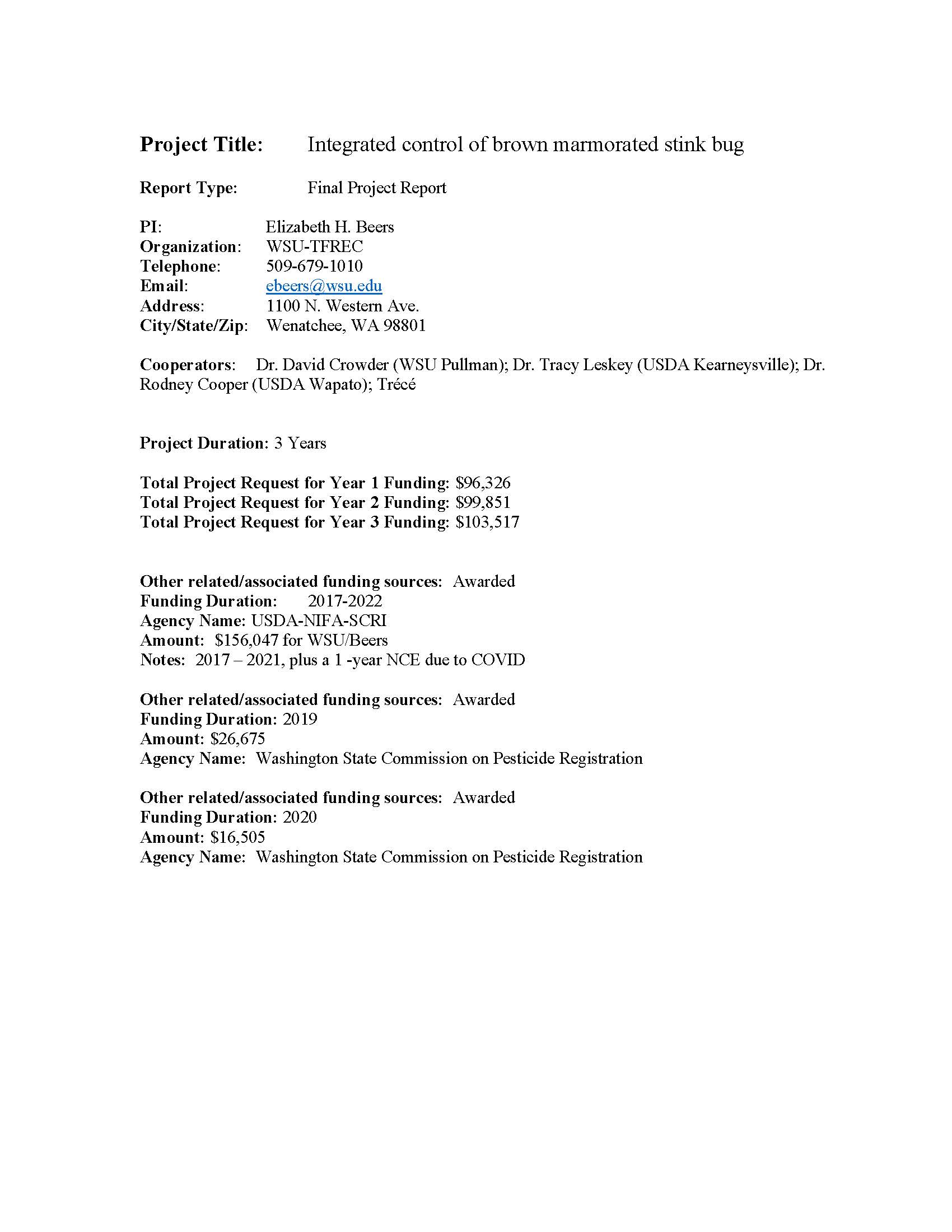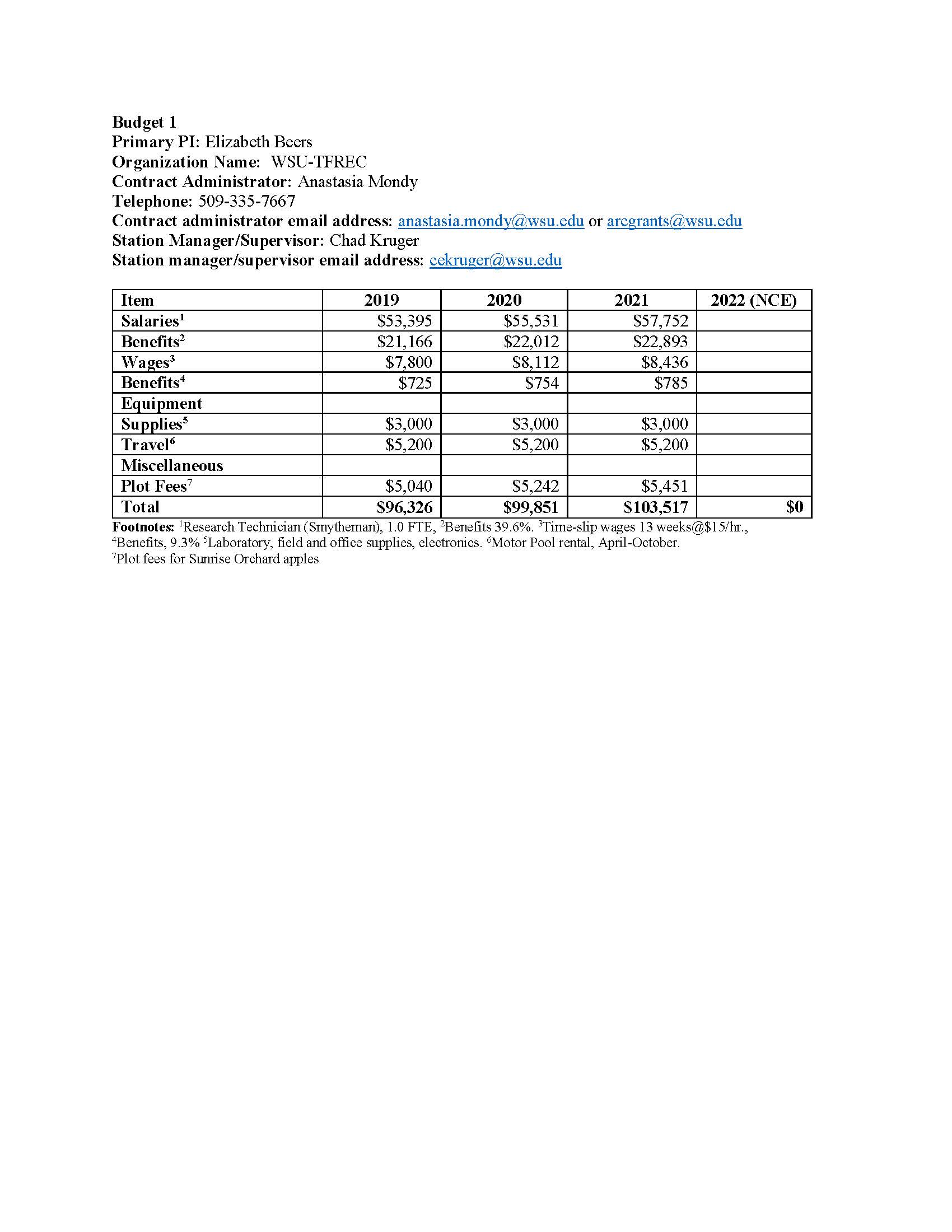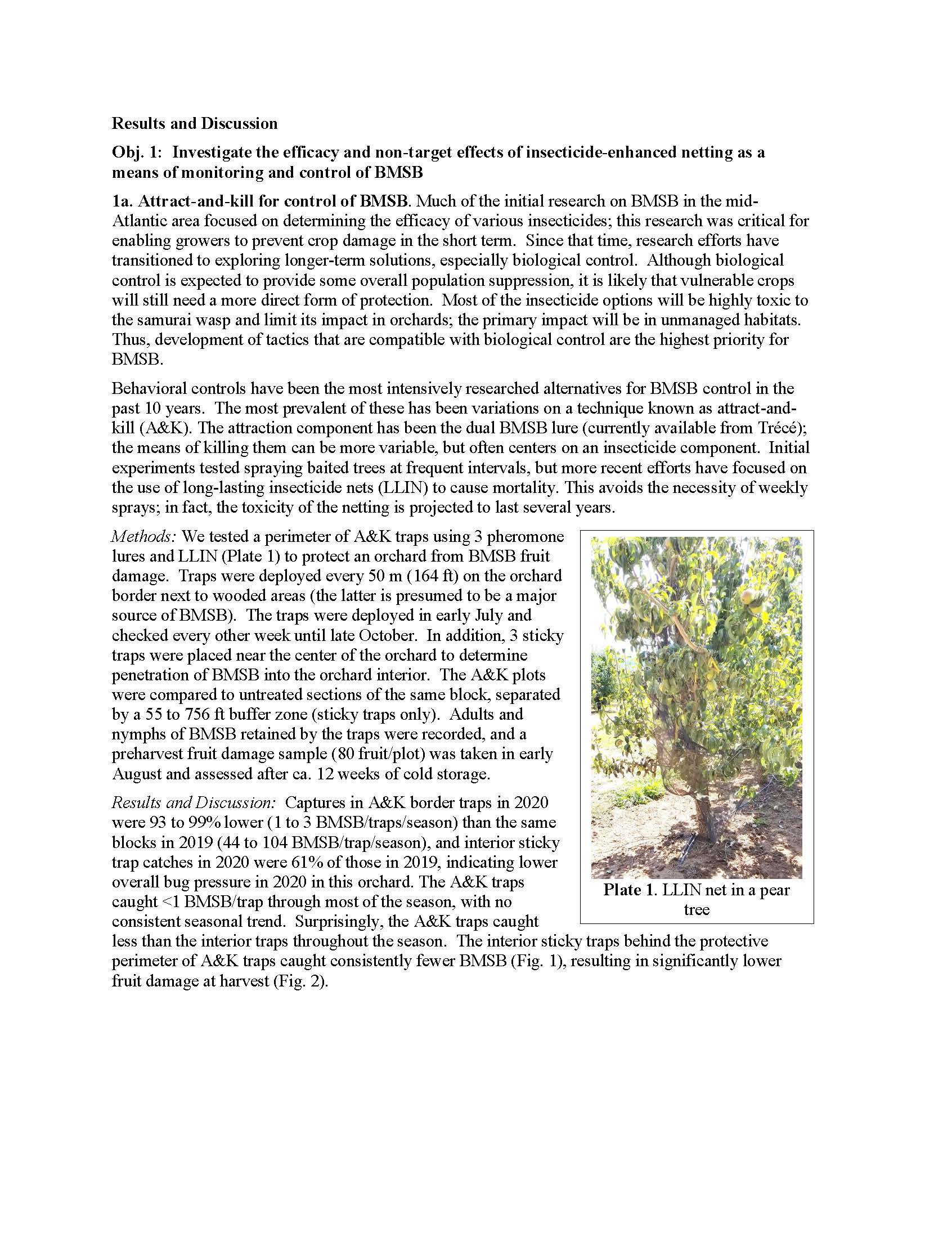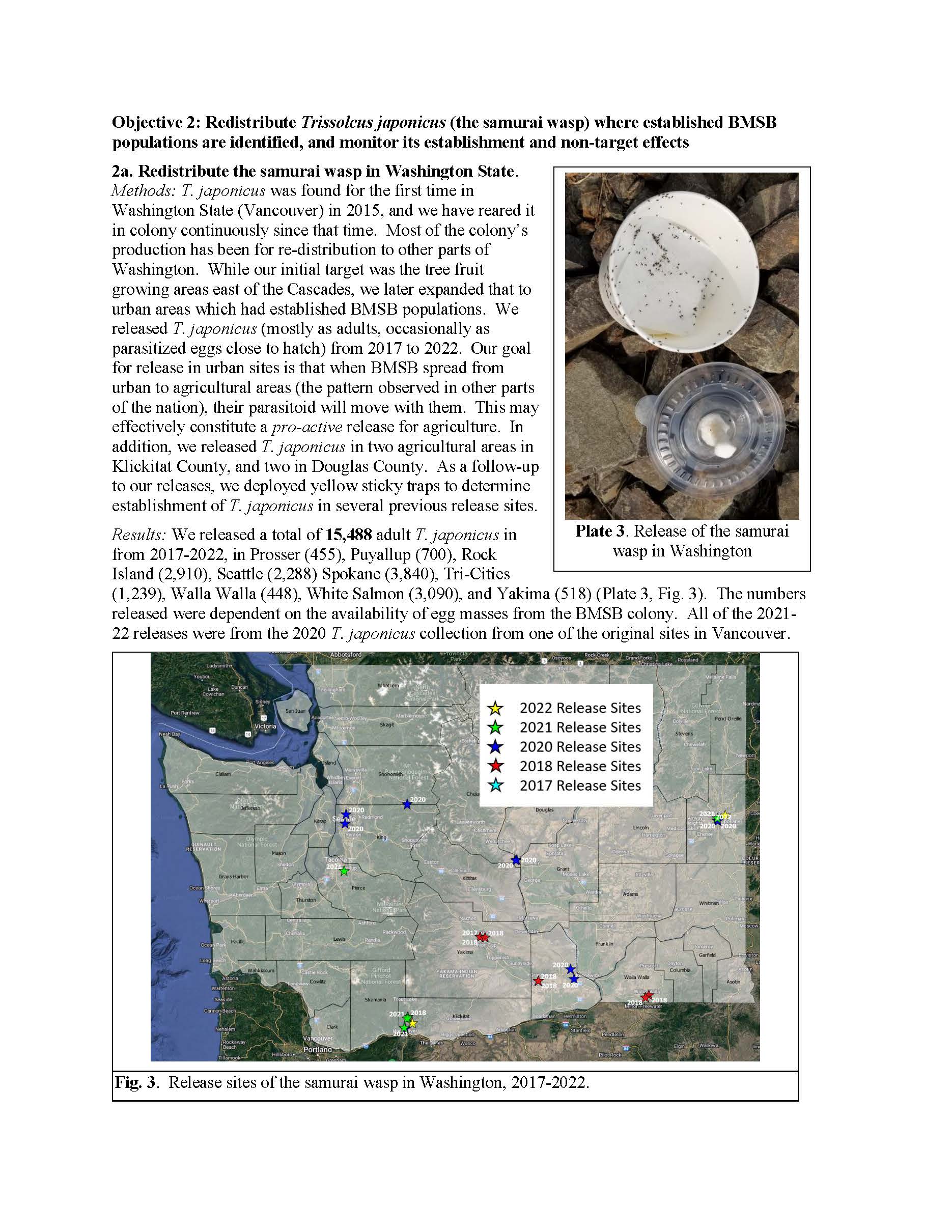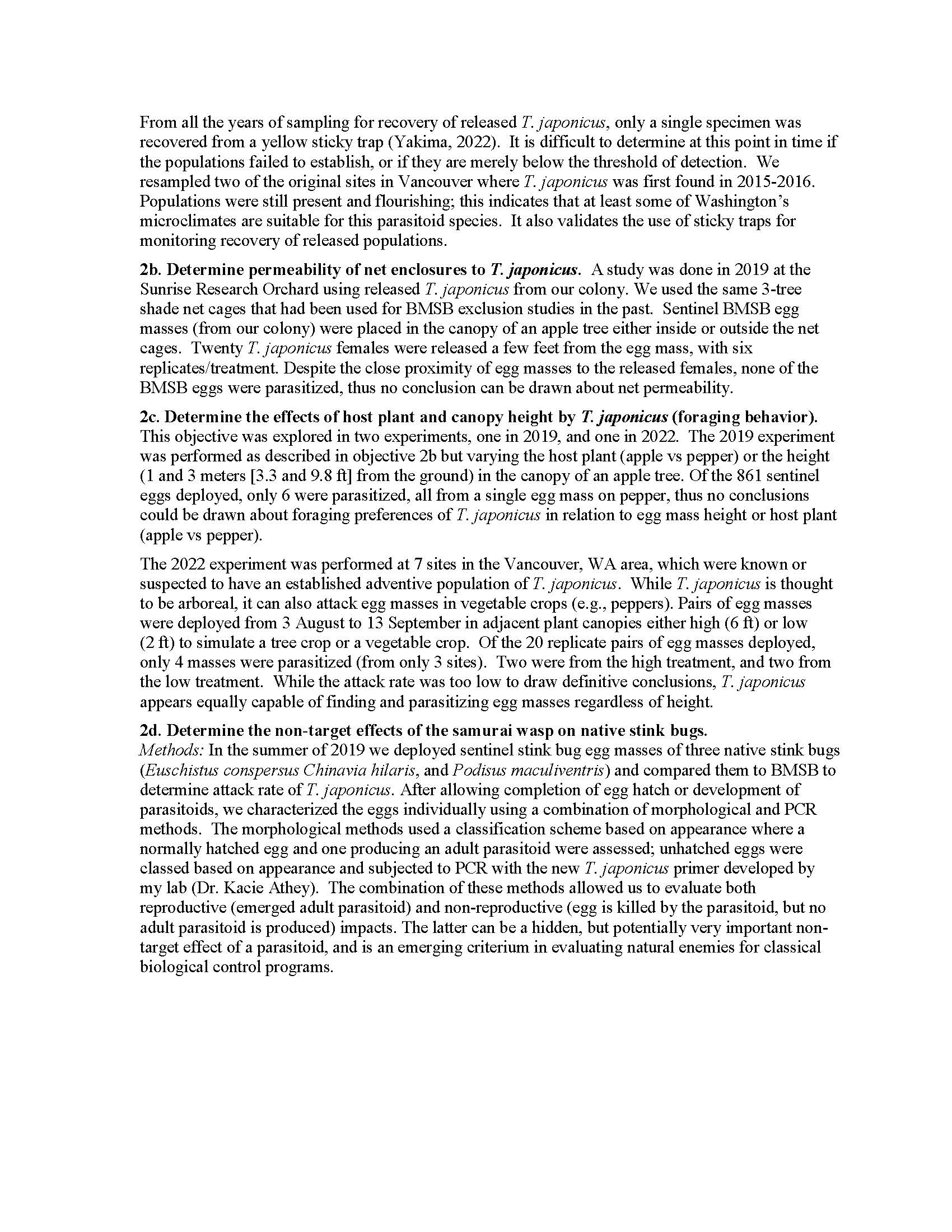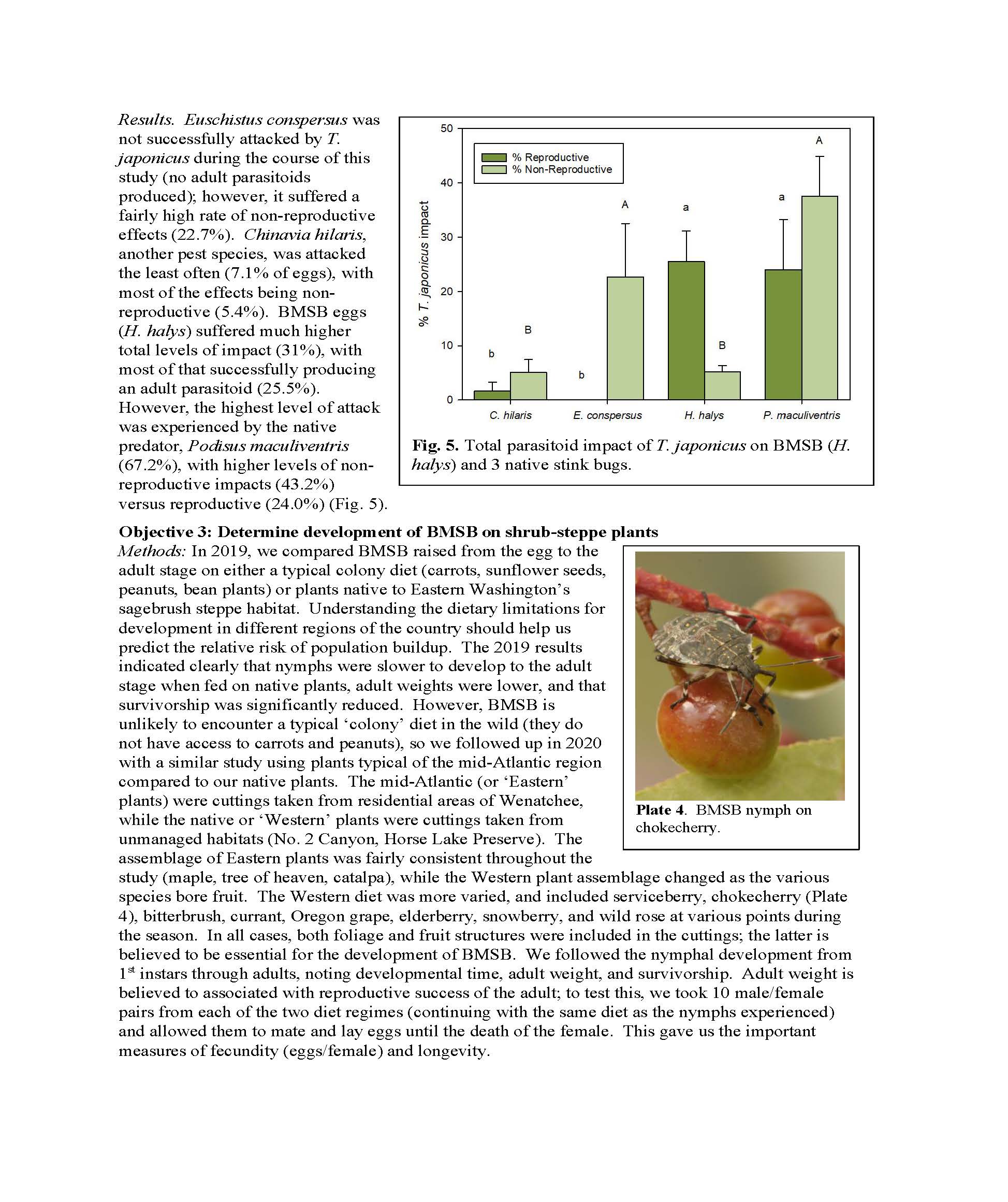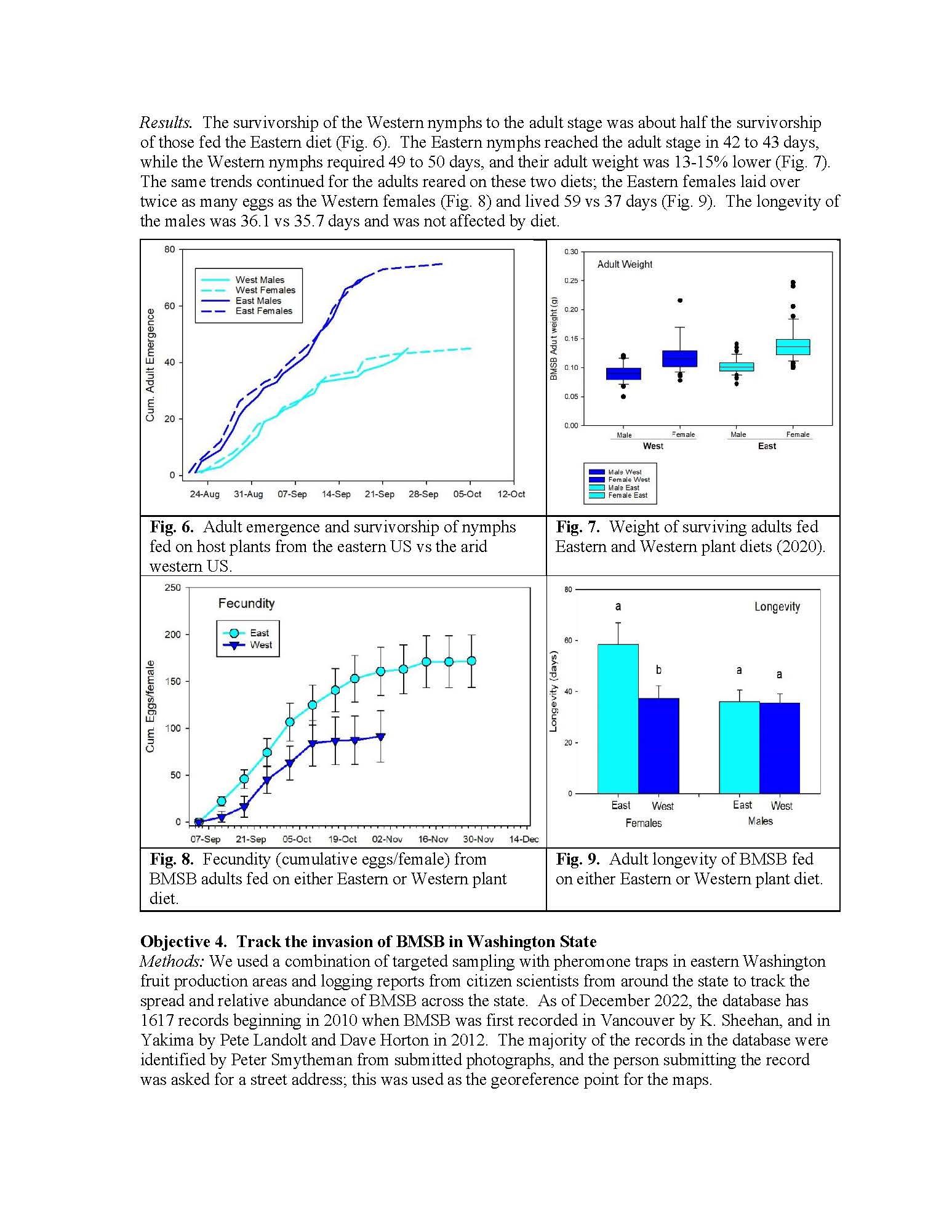Integrated control of brown marmorated stink bug
Author: Elizabeth H. Beers
Published: 2023
Summary: This project, along with the preceding WTFRC grant (CP-16-101), the leveraged projects funded by the USDA-SCRI program and the WSCPR, have established the baselines for a new invasive pest in Washington. We have tracked its spread throughout the state, studied its phenology and nutritional ecology, developed more efficient monitoring tools, explored behavioral and physical controls, and promoted classical biological control where native natural enemies were inadequate. Importantly, we have benefitted by, and contributed to, a national and international research and outreach effort by our colleagues. The reporting database has established that BMSB is by far more numerous in urban areas west of the Cascades. This may provide a significant advantage for Washington’s large agricultural industries which lie primarily east of the Cascades. The most likely explanation is that the semi-arid climate of the interior and its associated flora are inhospitable to this species, and may limit its population growth if not its spread. What remains to be seen is whether the current division we see is permanent, or merely reflecting a delay in invasion and population increase. We can also only speculate whether build-up in unmanaged habitats is a key element in the movement to crop fields and orchards, or if BMSB can achieve pest status without this reservoir. Moreover, we have clearly identified a possible mechanism why this east-west divide occurs: the poor nutrition provided by our shrub-steppe native plants. Feeding exclusively on native plants imposes a severe developmental and reproductive penalty on BMSB nymphs and adults. When these effects are combined with periods of extreme high temperatures and/or low humidity, mortality at various stages plus poor reproductive success predict greatly slowed population increase in comparison to more favorable climates/regions. We have successfully used native stink bugs as a model to study control of BMSB, with the added benefit that we now have new potential tools for native stink bugs. Studying control methods before a pest reaches critical levels is difficult, but highly advantageous. With chemical controls already thoroughly explored by eastern colleagues, we focused on behavioral controls using net barriers, insecticide infused netting, and pheromones. The initial results are promising, and may reduce the need for broad-spectrum insecticide applications in areas where BMSB reaches damaging levels. Lastly, we have made important contributions to the non-target effects of T. japonicus (the samurai wasp) because of the well-established adventive population in southwestern Washington. This includes employing new PCR methodology to fully evaluate such effects, and underscore the difference between physiological (lab-derived) host range and ecological host range (that which occurs in nature). This advances the science of introduction of classical biological control (CBC) agents, which may be valuable when future invasive species become candidates for this approach. We have also made significant efforts at re-distributing T. japonicus, although to date, without success. Recording our efforts will help future scientists evaluate CBC programs for BMSB, with special emphasis on climate matching of the natural enemy to the invaded region. The same factors that currently limit population growth of BMSB may also limit establishment of T. japonicus, either through climatic incompatibility, or simple low host densities.
Keywords:

